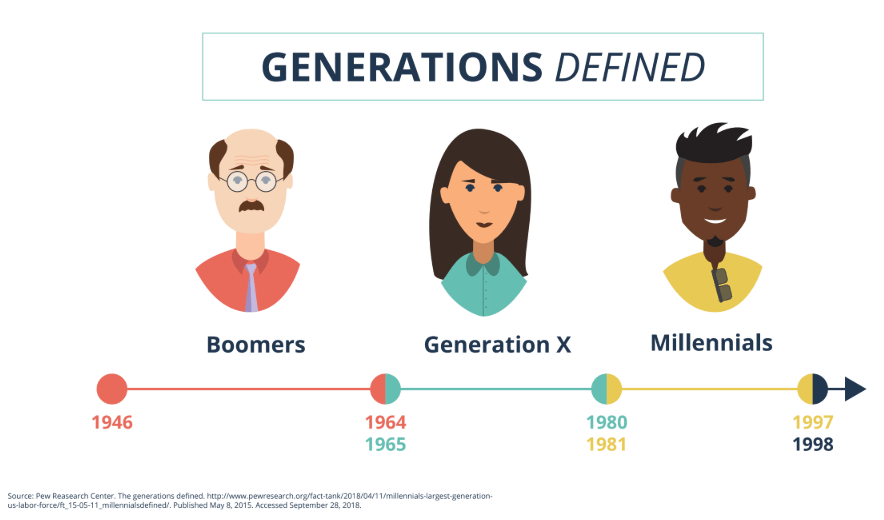Recruiting and Retaining Millennials in an Employees’ Market
Last updated on 28 Jan 2025

As job opportunities become more abundant and unemployment rates decrease, finding and retaining top-notch talent can be a challenge. This is a candidate’s market in which competitive salaries are often no longer enough, especially to millennials, who are always on the lookout for new opportunities. To entice and engage top performers in a tight labor market, HR professionals are being tasked to think outside the box and identify key supplemental offerings that not only enhance overall compensation packages, but also improve employee experience.
According to Catalyst.org the global talent shortage is at its highest in over 10 years.In the US, the unemployment rate has fallen beneath 4%, weekly jobless claims are at a 49-year low, and wages are growing at their fastest pace since 2009. This is great news, but it makes HR professionals’ jobs more difficult. When positions are as plentiful as they are today, top performers have many options, and companies must consistently improve their employee offerings to remain competitive. Sixty-six percent of workers agree that a strong benefits and perks package is the determining factor when considering a job offer and 61% would be willing to accept a lower salary if a company offered a great package. Conversely, inadequate benefits motivate 42% of employees to consider leaving their jobs and 55% have already left jobs because they found better benefit offerings elsewhere.
What’s interesting—and promising—is that the employees most likely to quit are also the most sensitive to wellness offerings. Millennials make up the largest and fastest growing segment of the labor force. While well-being programs are important to all age groups, millennials are particularly interested in them. In fact, 43% of millennials cite their company’s wellness programs as a reason they stay at their jobs, compared to 35% of Gen Xers and 28% of Boomers.
According to a 2016 Fidelity study, when asked how much of a pay cut they would be willing to take for an improved “quality of work life” millennials report, on average, a $7,600 pay cut annually.
When asked which is more important when evaluating an offer– financial benefits or improved quality of work life– 58% choose the latter.
For millennials in particular, wellness programs need to be comprehensive, involving physical, mental, and social well-being. Such programs make more than half of millennials (52%) “feel better about their company”, compared to 34% of Boomers.The younger generation is likely to expect even more from corporations: according to Deloitte, “Gen Z professionals may not perceive these programs as a ‘perk’ or a ‘gift,’ but rather as an expectation.”
Benefits that support employees’ physical, mental, social, and financial well-being are valued by top talent of all ages, and play a key role in employment-related decision making. Such programs are of vital importance for talent acquisition and retention strategies alike. Investing in employee wellness benefits is a savvy –some would say necessary— move. Especially if your goal is to recruit millennials, who are the largest (and growing) segment of the labor force. Now more than ever, wellness incentives can both attract and retain top talent, and create happier and healthier lives for all employees.
Download our latest whitepaper to learn more about how wellness offerings are increasingly vital to talent strategy.

Category
Share

The Wellhub Editorial Team empowers HR leaders to support worker wellbeing. Our original research, trend analyses, and helpful how-tos provide the tools they need to improve workforce wellness in today's fast-shifting professional landscape.
You May Also Like

See how to reduce employee health insurance costs | Qualidade de vida, gestão de pessoas e conteúdo para RH
It is important to offer employees a good health insurance plan, although it may not be mandatory in many sectors. Such benefits bring peace of mind and allow employees to focus on the job, not to mention the motivation factor which attracts and retains talents. Moreover, health is wealth. The wise saying makes sense, particularly […]

6 Ways Corporate Team Building Exercises Can Improve Employee Productivity | Qualidade de vida, gestão de pessoas e conteúdo para RH
Why should companies invest in team building? It is like asking why people should invest in their staff; it’s about increasing engagement from staff, in the pursuit of increased productivity which will ultimately provide the sought after, return on investment. Happy & engaged staff make for a better, more productive workplace. The benefits of team […]

How to Raise Awareness About Mental Health in the Workplace | Qualidade de vida, gestão de pessoas e conteúdo para RH
As an organisation leader, you can take steps to make your work environment more accepting for everyone. Here are a few examples about how to improve your company’s response to mental health. Create inclusive policies Policies are the only way to enact change, so evaluate your company’s formal processes to determine what you can do […]